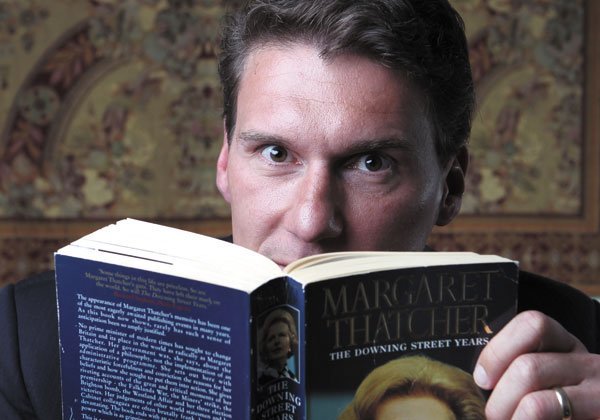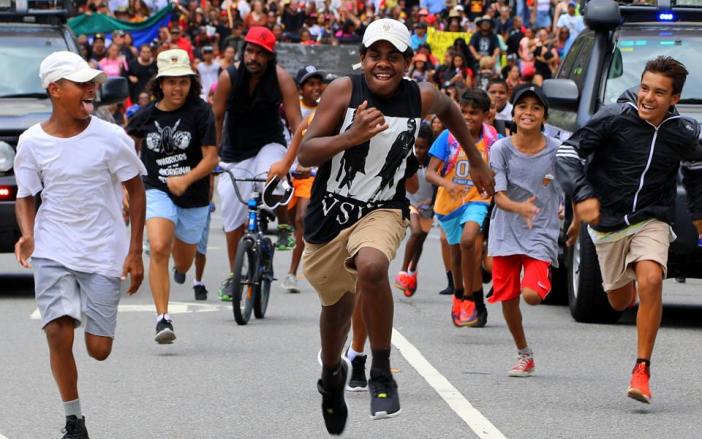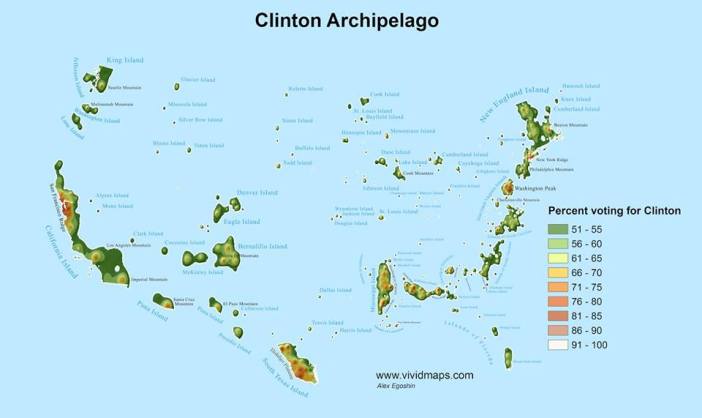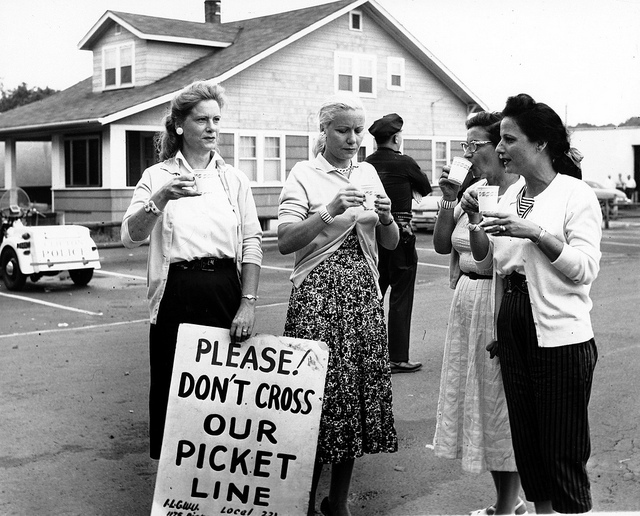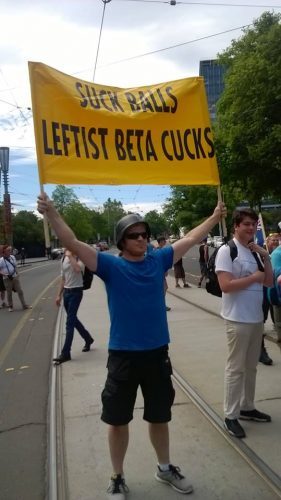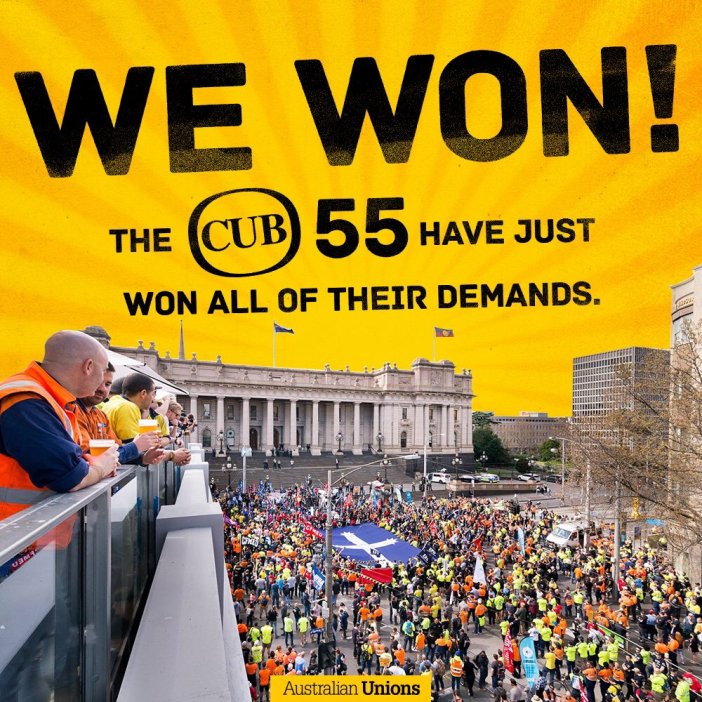
180 (or 179 depending who you ask) days after losing their jobs 55 Carlton & United Brewery workers won them back. This struggle – #CUB55 – has been probably the most prominent industrial dispute in Australia of 2016. This struggle has been taken up by elements of the union leadership as a key fight over wages and conditions and the role that labour-hire and contracting plays in holding down both down. It has taken on a national dimension. It drew in a fraction of the class that is involved in a few of the blue-collar unions and the Left (maybe in the 10,000s?). More generally the shafting of the CUB55 became a symbol in public debate of worsening working conditions – especially those of skilled blue collar workers.
On Thursday 8th September, I attended a rally held in Brisbane whilst on my lunch break. There were rallies around the country with the biggest in Melbourne being 15,000 strong. I had hoped to write about the rally and then segue into a more general piece about the state of the trade union[1] movement and its complex relationship to the broader composition of the class in Australia and the prospects and pitfalls of our struggles against capitalism and for a society of dignity worth living in. I wanted to bounce my ideas off a recent article in Meanjin by former ACTU assistant secretary Tim Lyons (2016) which, from a thoroughly social democratic position, both excoriated the state of the unions and proposed a broad path for rejuvenation. Who can disagree with the following diagnosis?
Traditional unionised blue-collar jobs continue to vanish, and unions have a demographic problem, with almost half of members over 45 years old. Strikes are statistically extinct, and employers don’t fear a monster from the history books. Unions are mainly visible about corruption or special deals. Or they appear to be active in politics, and always electoral politics, hardly ever about work and workers.
Unions have a problem with politics, a lack of ambition, a lack of focus on work, and with policy. People in the movement focus on, and spend workers’ money on, general issues of campaigning and electoral politics because it’s easier than talking about and doing real organising, and certainly easier than beginning fundamentally to transform unionism. The political campaigning involves advertising on a variety of platforms, social media and systematic voter contact by phone and face to face. It’s become the principal subject of discussion in the peak councils of the union movement over a number of years, to the effective exclusion of core industrial and organising issues.(90-91)
If Lyon’s article is the higher water mark of current social democratic thinking I hoped to produce a communist alternative. However, like most of my writing this year, this piece remained unfinished. Thus, instead I have lowered my ambitions and here publish my observations of the rally and a few general thoughts. My participation in the #CUB55 struggle was less than marginal. Apart from attending the rally I simply shared relevant material on social media and didn’t buy CUB products. In my defence this was the mode of activity the unions promoted to members. I hope others will write up their own experiences – especially comrades involved in the more active parts of the struggle like the picket in Melbourne. The unions in Australia have a habit of trying to mythologise everything (including defeats) as incredible victories and this undermines our ability to think seriously about the state we are in. ‘Proletarian revolutions’, we should remember, ‘constantly engage in self-criticism’(Marx 1992, 150).
There were perhaps maybe 1000 people at the rally. The vast majority were members of the CFMEU and seemed to have attended as part of their work crews from the big CBD construction sites. I assume that they had stopped work and walked off to join the march – thus perhaps engaging in technically illegal industrial action. I also noticed some AMWU flags and MUA flags. I was the only person I saw in office wear and as far as I can tell I was the only non-official from the union Together who attended. The clear majority of the people attending the rally seemed genuinely engaged with what was going on (though people were also playing Pokémon Go, chatting with mates and some, I noticed on my walk, had already gone to the pub.)
I was only able to attend for a short period of time and missed the march. I heard the MC and two speakers. One was an official from the AMWU the other from the CFMEU. The content of their speeches were far more radical than what I am used to from officials.
They spoke of class war (but in the sense of Warren Buffet’s quote that the rich are fighting a class war), mentioned revolt and revolution and presented an explanation for declining economic fortunes framed within a radical Keynesian perspective. ‘Labor powerbroker and CFMEU state secretary Michael Ravbar addressed the rally, telling the boisterous crowd to loud cheers: “I love a f—ing revolution”’ (Akers and Templeton 2016). Australia was facing grim economic times, we heard, because a ruling class was holding down wages. Despite the fiery rhetoric the concrete strategy the speakers outlined was encouraging the participants at the rally to speak to friends and families about what was going on and to boycott CUB beers. Indeed this is the campaign being run via Unions Australia with a special focus being on getting people to commit to have CUB free BBQs – interestingly a number of pubs have also joined the boycott (Toscano 2016).
There was a fair dollop of Australian nationalism – that the actions of the company were deplorable since it impacted ‘Aussie’ workers – but not to the disgusting and cretinous level of this video put out by Unions Australia.
Nationalism, indeed ethno-nationalism, has long been a mainstream tradition in the Australian Labour Movement with support for the White Australia policy coming from both the ALP and the trade unions ( as well as more radical socialist groups) for much of the 20th Century (Curthoys and Markus 1978, McQueen 1986). The ‘rational’ core to this (if you can call it this) was an attempt to restrict the size of the pool of labour; this functioned as an alternative path to improving working conditions – hold down the supply of labour instead of directly attacking capital. This rational core was of course inseparable from an irrational totality thick with antiAsian racism and fantasies of Empire – and tied the fate of labour to that of the nation-state. Today we see continuations with opposition to 457 visas etc. And as social democracy as an ideology crumbled in the neoliberal age the ALP and the unions grew to rely more and more heavily on nationalism to draw a vision and rhetoric from. (We shouldn’t forget of course that neoliberalism was implemented in Australia by the ALP and the unions) (Humphrys and Cahill 2016). They share this with almost all the forces of the political spectrum – nationalism is the dominant and dominating ideology of Australia (not liberalism with or without the ‘neo’ prefix). Political debate seems often little more than defining what and who is or is not ‘UnAustralian’: as if ‘Australian’ is the only category left that has any substance.
However, this has to be counterpoised against how polycultural and multiethnic the crowd at the rally was. Not only do unions like the CFMEU have a formal antiracist politics (CFMEU members and officials along with Antifa confronted Golden Dawn supporters and other fascists in 2014) the union membership itself is diverse bunch. From a distance and as someone who has never come even close to working on a building site construction seems to be an industry where people whose backgrounds haven’t established them in the higher stratum of the working class can make a pretty good wage. During the Lady Cilento struggle I heard Bob Carnegie (I think) talk of construction as the industry for outsiders – those recently out of jail, new to the country etc. – and one that offered conditions that allowed you to build a good life. The CFMEU has apparently successfully and cleverly incorporated this outsider and rebel image. Migrant workers have also brought their own radical traditions – thus in Sydney you see CFMEU contingents being led by Korean drummers. The lived cultural hybridity and everyday friendships between people of different ethnic backgrounds is often downplayed by erstwhile antiracists as simply a multiculturalism of the food court – I think this is an error. Rather it is a great practice of everyday solidarity and care and the reservoir of the antiracist struggles to come.
I had to return to work and missed the rest of the speakers but the rally proceeded to march to the CUB offices.
Since then the Courier Mail has been apoplectic about the impact of the rally and sees it evidence of a rogue union as well as being furious about the ALP state government’s refusal to condemn the actions (Akers and Templeton 2016, Templeton 2016b). Unsurprisingly the Master Builders has also denounced the economic damage the rally and associated stop work apparently caused….or they suspect it to have caused….there are no specifics they could cite…..(Templeton 2016a). But this outrage is more about the ideological function of the media than a serious assessment of what happened. We need rather the concrete analysis of the concrete situation – and struggles of whatever size allow us to start to see in broad outlines our own strengths and the situation we are in.
It was, as things go in Brisbane right now, pretty impressive and lightyears ahead of where the union movement is generally at. In comparison, my union Together is currently lobbying the Palaszczuk ALP State government over forthcoming changes to IR legislation. The union is a strong supporter of the government – see for example it’s confused position on the government’s changes to public sector superannuation. Facing sizeable state debt but having been elected largely due to popular rejection of the previous Newman LNP Government’s plan to privatise state assets the current Palaszczuk ALP Government doesn’t have much room to move. In 2015 it shifted some debt onto the shoulders of state owned energy companies – and then on to the shoulders of the workers in these companies – and committed to ‘only funding long service leave on an emergent basis, rather than setting aside financial assets; and temporary suspension of investment of defined benefit employer contributions, whilst maintaining a fully–funded status’(2015, 12). The 2016-17 Budget contained the plan to take $4 billion from the superannuation fund for defined benefits for public servants (Elks 2016). In other words, take from the future incomes of retired workers (or at least the funds that will generate the future incomes of retired workers) to pay the state’s debts. (Indeed the current state surplus is due to a surprise rise in royalties from coal exports and the impacts of these attempts to shift debt)(2016, 28). Together doesn’t actually oppose this development – rather only a clause in the legislation that allows the ‘Treasurer the power to change how allowances are used to calculate retirement benefits for QSuper defined benefit funds holders’ (2016). In fact, when members used Facebook to argue against this potential undermining of our super the union argued against members in the government’s favour.
From this very weak and confused position a strange campaign is unfolding aimed at job security, workloads and this one element of the superannuation changes. I’ve worked for about 4 years in the public service and all of these are real issues. Workers are hired on a 6-month contract after 6-month contract and many workers are hired as casuals via labour-hire agencies. The campaign so far has involved a Thunderclap rally to manifest some kind of social support for the Together secretary Alex Scott as he lobbied parliamentarians.
Whilst we can all talk about the importance of using social media in social struggles Thunderclap is a strange and disembodied experience. Proving Adorno’s point that ‘The decay of the workers’ movement is corroborated by the official optimism of its adherents’ the official line from the union is that this online rally was a great success (2005, 113). 559 members participated – a paltry amount and evidence of Together’s atrophied ability to mobilise even its own membership.
Compared to the practice of my union Together rally was really something as was the capacity of the CFMEU to mobilise members. Yet as I walked back to work I couldn’t help notice how much of the city wasn’t impacted – that just one small spoke of the urban machinery of accumulation was effected. This I think is a testament to several phenomena. Firstly, the incredible heterogeneous composition of the working class in Australia and thus the current absence of a unifying understanding and practices of work, struggle and solidarity amongst the class. (Indeed most people in Australia understand themselves to be ‘middle class’)(Lewis 2016). Secondly, the vastly eroded capacities of the trade unions and the structural inability of the clear majority of the union apparatus to connect with its members in the place they work – and the absence of any practical organisational alternative. Thirdly, industrial disputes are at historic lows and the lion’s share of them take place in the construction industry(Australian Bureau of Statistics 2016). Indeed the Reserve Bank itself has been theorising that the lack of workers’ collective power may be one of the reasons why wage growth is so low (Jacobs and Rush 2015) . There is no easy answer to all these problems. Rather we will need a host of efforts (perhaps already going on) to increase our power in the terrain of our lives. This in some situations may involve working in and through the union structures; in other situations perhaps unions will be irrelevant or even hostile.
Finally, it is worth thinking about the boycott as strategy. Perhaps the success of this struggle shows that for many companies, especially those producing consumer commodities, the value of their brand is worth as much as their more material assets. Struggles that hurt the brand have a real power. (I have however not found any evidence that the boycott did have any substantial impacts on sales beyond some anecdotes.) On the other hand, it is an indication again about the current lack of our power. It seems to be presently unthinkable – for good reasons – to imagine that struggles like this could be fought by more militant means: strikes and work bans in the logistics networks, blockades by supporters of distribution points, pickets of business selling these products etc. That is, by the social strike. As successful as this struggle has been, as the conditions of capital accumulation in Australia get more and more rickety it is probably worth at least having discussions about what we can do to open up the horizon of the possible. Workers, union and nonunion, directly sharing our experiences with each other may help us do this.
- Mid Year Fiscal and Economic Review 2015-16: Jobs Now, Jobs for The Future.
- Queensland Budget 2016-17 Mid Year Fiscal and Economic Review. Available from https://www.treasury.qld.gov.au/publications-resources/mid-year-review/mid-year-review-2016-17.pdf.
Adonro, Theodore. 2005. Minima Moralia: Reflections On A Damaged Life. Translated by E.F.N. Jephcott. London & New York: Verso.
Akers, Trenton, and Anthony Templeton. 2016. “OK, Victoria’s Bitter.” Couier Mail, 9th September 2016, 10.
Australian Bureau of Statistics. 2016. 6321.0.55.001 – Industrial Disputes, Australia, September 2016. Australian Bureau of Statistics [cited 1st December 2016]. Available from http://www.abs.gov.au/ausstats/abs@.nsf/mf/6321.0.55.001?OpenDocument.
Curthoys, Ann, and Andrew Markus. 1978. Who Are Our Enemies: Racism and the Working Class in Australia. Neutral Bay: Hale & Iremonger.
Elks, Sarah. 2016. Annastacia Palaszczuk not concerned over $4bn super grab. The Australian [cited 15th October 2016]. Available from http://www.theaustralian.com.au/national-affairs/state-politics/annastacia-palaszczuk-not-concerned-over-4bn-super-grab/news-story/ee460e2fe1f362b2ab82f0e03febd2bb.
Humphrys, Elizabeth, and Damien Cahill. 2016. “How Labour Made Neoliberalism.” Critical Sociology. doi: 10.1177/0896920516655859.
Jacobs, David, and Alexandra Rush. 2015. Why Is Wage Growth So Low? Reserve Bank of Australia [cited 29th September 2015]. Available from http://www.rba.gov.au/publications/bulletin/2015/jun/2.html.
Lewis, Peter. 2016. Looking through a Marxist lens (and why class is the new black). The Guardian [cited 13th December 2016]. Available from https://www.theguardian.com/commentisfree/2016/nov/30/looking-through-a-marxist-lens-and-why-class-is-the-new-black.
Lyons, Tim. 2016. The labour movement: My part in its downfall: How to rebuild the power of working people [online]. Meanjin 75 (3): 87-95, http://search.informit.com.au.ezproxy.library.uq.edu.au/documentSummary;dn=386017709781726;res=IELLCC
Marx, Karl. 1992. Surveys From Exile: Political Writing Vol. 2. London: Penguin Books.
McQueen, Humphrey. 1986. A New Britannia: An argument concerning the social origins of Australian radicalism and nationalism. Ringwood, Victoria: Penguin Books Australia Ltd.
Templeton, Anthony. 2016a. “Business slams cost to Queensland for protest over workers interstate.” Courier Mail, 9th September 2016, 10.
Templeton, Anthony. 2016b. “Unions’ mayhem OK by us: ministers.” Courier Mail, 10 September 2016, 7.
Together. 2016. Draft legislation affecting QSuper defined benefit superannuation. Together [cited 15th October 2016]. Available from http://www.together.org.au/news/member-emails/draft-legislation-affecting-qsuper-defined-benefit-superannuation/.
Toscano, Nick. 2016. ‘I’m not drinking it now’: VB on the nose as pubs join fight for brewery jobs. smh.com.au [cited 29th September 2016]. Available from http://www.smh.com.au/business/workplace-relations/im-not-drinking-it-now-vb-on-the-nose-as-pubs-join-fight-for-brewery-jobs-20160923-grmovo.html.
[1] Debates over trade unions often fall into three standardised positions: social democratic – unions are the natural organisation of the working class; socialist – unions are the natural organisation of the working class but are misled by sell-out bureaucrats; anarchist and ultraleft – unions are purely recuperative bodies that keep workers chained within capitalism. Personally, I see them as being far more contradictory and that these contradictions arise from the contradictory nature of the working class itself. However, these contradictions aren’t stable – they are historically determined. The historical experience of trade unions in Australia in recent decades is a fairly disappointing one.
